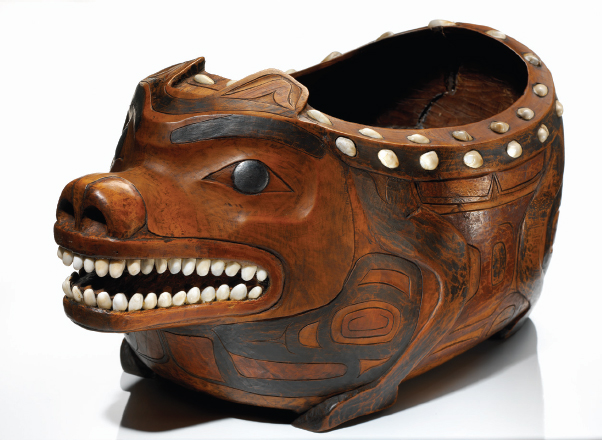America’s History: Printed Page 16
America: A Concise History: Printed Page 15
America’s History: Value Edition: Printed Page 14
Patterns of Trade
Expansive trade networks tied together regions and carried valuable goods hundreds and even thousands of miles. Trade goods included food and raw materials, tools, ritual artifacts, and decorative goods. Trade enriched diets, enhanced economies, and allowed the powerful to set themselves apart with luxury items.
In areas where Indians specialized in a particular economic activity, regional trade networks allowed them to share resources. Thus nomadic hunters of the southern plains, including the Navajos and Apaches, conducted annual trade fairs with Pueblo farmers, exchanging hides and meat for maize, pottery, and cotton blankets. Similar patterns of exchange occurred throughout the Great Plains, wherever hunters and farmers coexisted. In some parts of North America, a regional trade in war captives who were offered as slaves helped to sustain friendly relations among neighboring groups. One such network developed in the Upper Mississippi River basin, where Plains Indian captives were traded, or given as diplomatic gifts, to Ottawas and other Great Lakes and eastern woodlands peoples.

Across longer distances, rare and valuable objects traveled through networks that spanned much of the continent. Great Lakes copper, Rocky Mountain mica, jasper from Pennsylvania, obsidian from New Mexico and Wyoming, and pipestone from the Midwest have all been found in archaeological sites hundreds of miles from their points of origin. Seashells — often shaped and polished into beads and other artifacts — traveled hundreds of miles inland. Grizzly bear claws and eagle feathers were prized, high-status objects. After European contact, Indian hunters often traveled long distances to European trading posts to trade for cloth, iron tools, and weapons.
Within Native American groups, powerful leaders controlled a disproportionate share of wealth and redistributed it to prove their generosity and strengthen their authority. In small, kin-based bands, the strongest hunters possessed the most food, and sharing it was essential. In chiefdoms, rulers filled the same role, often collecting the wealth of a community and then redistributing it to their followers. Powhatan, the powerful Chesapeake Bay chief, reportedly collected nine-tenths of the produce of the communities he oversaw — “skins, beads, copper, pearls, deer, turkeys, wild beasts, and corn” — but then gave much of it back to his subordinates. His generosity was considered a mark of good leadership. In the Pacific Northwest, the Chinook word potlatch refers to periodic festivals in which wealthy residents gave away belongings to friends, family, and followers.